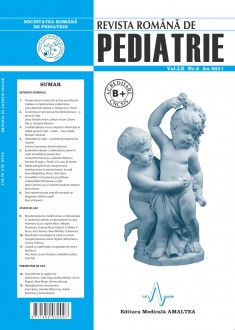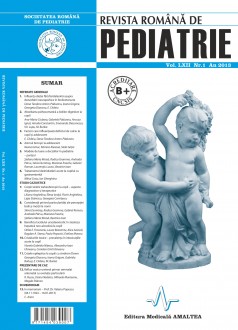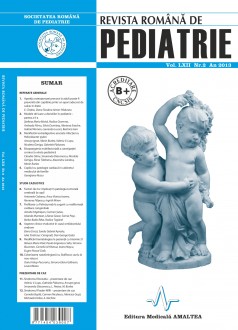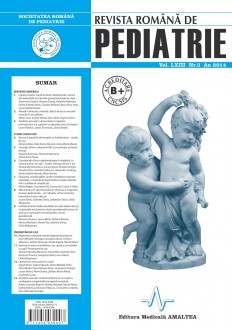SELECT ISSUE

Indexed

| |

|
|
|
| |
|
|
|

|
|
|
|
|
|
|
HIGHLIGHTS
National Awards “Science and Research”
NEW! RJP has announced the annually National Award for "Science and Research" for the best scientific articles published throughout the year in the official journal.
Read the Recommendations for the Conduct, Reporting, Editing, and Publication of Scholarly work in Medical Journals.
The published medical research literature is a global public good. Medical journal editors have a social responsibility to promote global health by publishing, whenever possible, research that furthers health worldwide.
Modern aspects of infective endocarditis treatment and prophylaxis in children
Alina Costina Luca, Constantin Iordache and Stefana Maria Moisa
ABSTRACT
Infective endocarditis represents a relatively rare, but potentially lethal disease during childhood. The therapeutic goal is to rapidly and completely eradicate the infection. This can be attained by precocious administration of effective doses of antibiotics, for an adequate period of time. The latest infective endocarditis prophylaxis guides recommend that prophylactic antibiotic administration is maintained for patients with predisposing heart diseases, but prophylactic administration of antibiotics should be limited to patients with the highest risk that undergo highest risk procedures.
Key words: infective endocarditis, treatment, prophylaxis



